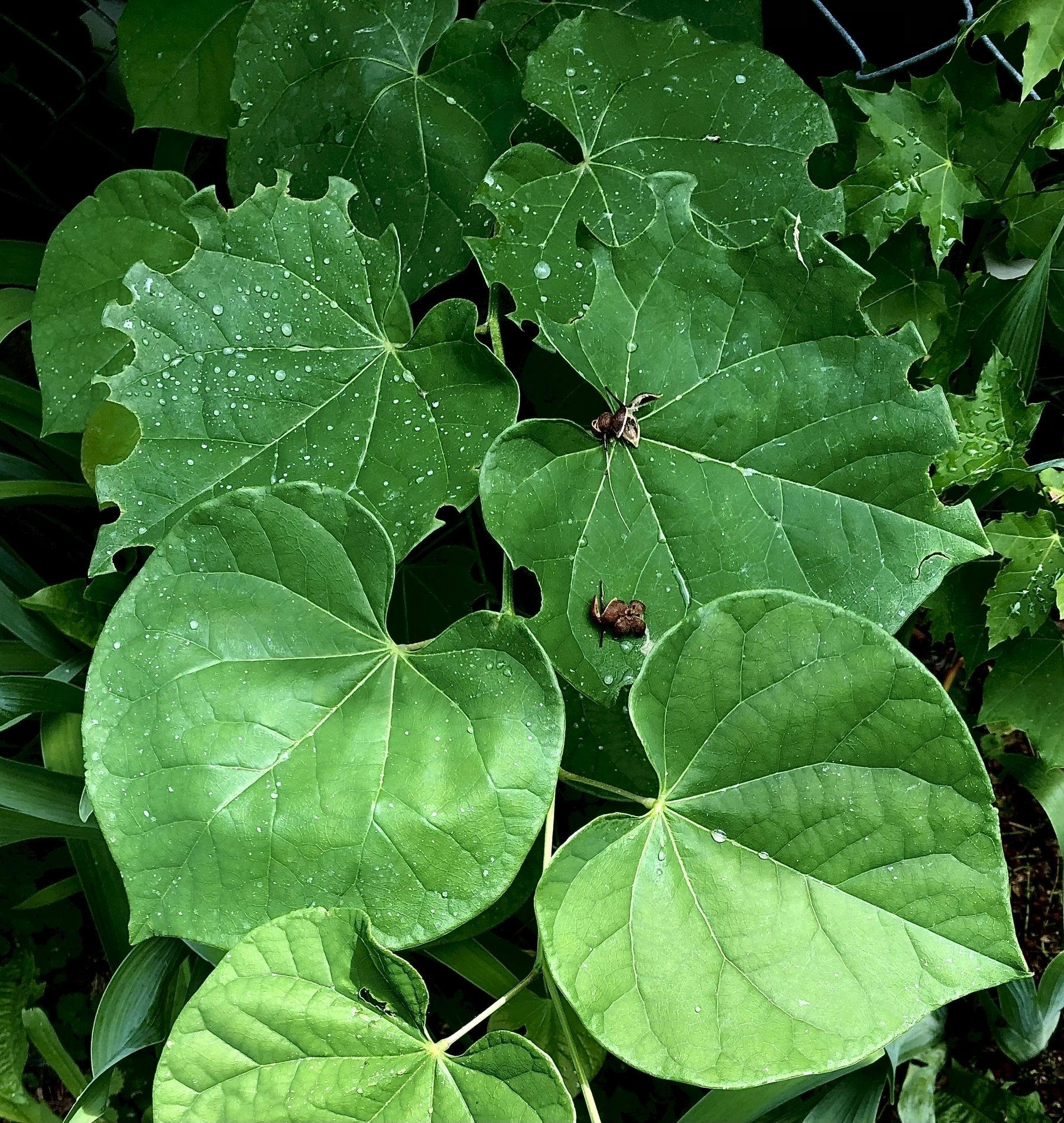04 July 2022
Kamál, 11 Rahmat (Mercy), 179 B.E
The 21st wedding anniversary with my AWESOME BEYOND WORDS partner in life! Thanks to each and all for the celebratory parades and fireworks!
Seen
It’s long past early spring when the eastern redbud Cercis canadensis blooms, but even now just the leaves make for an exquisite study in green:

Done
Posted the Portfolio Management Process slides to Frameworks for Understanding the World as a complement to the Change Management Process slides I posted yesterday.
Added pages for Design Engineering (Ron Leonard) and Complex Adaptive Systems (Bill Fulkerson) to go with Hanging Out (Phil Bosserman) under a new header, Collaborations. Don’t look for any writing quite yet. That’s upcoming over a projected span of weeks and weeks and weeks ;-)
Later this week I’ll add another header for “Daily Log” so I can import my posts (like this one) from Micro.blog to WordPress — a further test of my patience and thinking skills when dealing with new-to-me website features ;-)
Noted
Astral Prospecting on Instagram and Astral Prospecting on Facebook
Marc Bosserman on Instagram Marc Bosserman on Facebook, and Marc Bosserman Music and Musings on YouTube
Quoted
Each kingdom of creation is endowed with its necessary complement of attributes and powers. The mineral possesses inherent virtues of its own kingdom in the scale of existence. The vegetable possesses the qualities of the mineral plus an augmentative virtue, or power of growth. The animal is endowed with the virtues of both the mineral and vegetable plane plus the power of intellect. The human kingdom is replete with the perfections of all the kingdoms below it with the addition of powers peculiar to man alone. Man is, therefore, superior to all the creatures below him, the loftiest and most glorious being of creation. Man is the microcosm; and the infinite universe, the macrocosm. The mysteries of the greater world, or macrocosm, are expressed or revealed in the lesser world, the microcosm. The tree, so to speak, is the greater world, and the seed in its relation to the tree is the lesser world. But the whole of the great tree is potentially latent and hidden in the little seed. When this seed is planted and cultivated, the tree is revealed. Likewise, the greater world, the macrocosm, is latent and miniatured in the lesser world, or microcosm, of man. This constitutes the universality or perfection of virtues potential in mankind. Therefore, it is said that man has been created in the image and likeness of God.
Let us now discover more specifically how he is the image and likeness of God and what is the standard or criterion by which he can be measured and estimated. This standard can be no other than the divine virtues which are revealed in him. Therefore, every man imbued with divine qualities, who reflects heavenly moralities and perfections, who is the expression of ideal and praiseworthy attributes, is, verily, in the image and likeness of God. If a man possesses wealth, can we call him an image and likeness of God? Or is human honor and notoriety the criterion of divine nearness? Can we apply the test of racial color and say that man of a certain hue—white, black, brown, yellow, red—is the true image of his Creator? We must conclude that color is not the standard and estimate of judgment and that it is of no importance, for color is accidental in nature. The spirit and intelligence of man is essential, and that is the manifestation of divine virtues, the merciful bestowals of God, the eternal life and baptism through the Holy Spirit. Therefore, be it known that color or race is of no importance. He who is the image and likeness of God, who is the manifestation of the bestowals of God, is acceptable at the threshold of God—whether his color be white, black or brown; it matters not. Man is not man simply because of bodily attributes. The standard of divine measure and judgment is his intelligence and spirit.
Therefore, let this be the only criterion and estimate, for this is the image and likeness of God. A man’s heart may be pure and white though his outer skin be black; or his heart be dark and sinful though his racial color is white. The character and purity of the heart is of all importance. The heart illumined by the light of God is nearest and dearest to God, and inasmuch as God has endowed man with such favor that he is called the image of God, this is truly a supreme perfection of attainment, a divine station which is not to be sacrificed by the mere accident of color. 1
- ʻAbduʼl-Bahá. The Promulgation of Universal Peace: Talks Delivered by ʻAbduʼl-Bahá during His Visit to the United States and Canada in 1912. Edited by Howard MacNutt. 2nd ed. Wilmette, Ill: Baháʼí Publishing Trust, 1982, 69-70. https://www.bahai.org/library/authoritative-texts/abdul-baha/promulgation-universal-peace/4#517138722 [return]